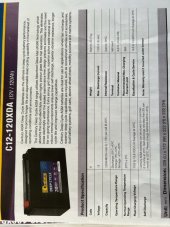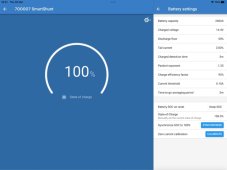Tardis
New Member
Greeting from New Zealand…
I have read many posts online regarding tail current settings with Victron SmartShunts and Victron SmartSolar MPPT Charges.
My setup is as follows… 1 x SmartSolar MPPT 100/30 controller, 1 x IP65 SmartShunt 500A/50mV, 1 x Smart Battery Sense, 2 x Century 120AH Batteries AGM Deep Cycle wired in parallel , 2 x 145w BCT145M-12 Solar Panels wired in series.
I seem to have all the recommended settings in both the SmartSolar controller and SmartShunt however I’m unable to calculate the correct tail current value. This is where I would appreciate some kind assistance from the members please. Attached are screen shots and battery information. Please advise if further information is required to determine the tail current. Many thanks Dave.


I have read many posts online regarding tail current settings with Victron SmartShunts and Victron SmartSolar MPPT Charges.
My setup is as follows… 1 x SmartSolar MPPT 100/30 controller, 1 x IP65 SmartShunt 500A/50mV, 1 x Smart Battery Sense, 2 x Century 120AH Batteries AGM Deep Cycle wired in parallel , 2 x 145w BCT145M-12 Solar Panels wired in series.
I seem to have all the recommended settings in both the SmartSolar controller and SmartShunt however I’m unable to calculate the correct tail current value. This is where I would appreciate some kind assistance from the members please. Attached are screen shots and battery information. Please advise if further information is required to determine the tail current. Many thanks Dave.





